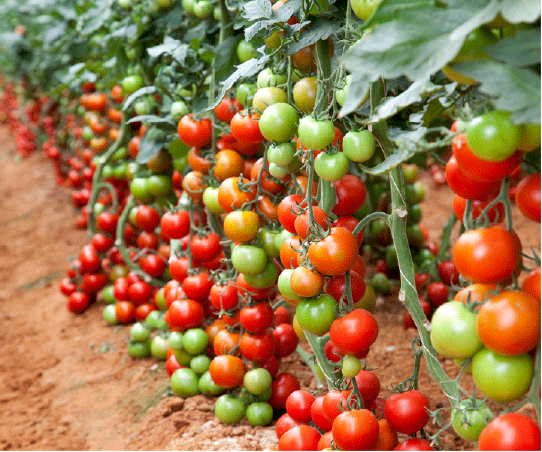After we have had a few warm, dry spring days, gardeners usually begin thinking about planting tomatoes. We seem to be finally warming up and seeing more sun breaks than showers, so it’s time to get them in the ground.
First, make a list of the varieties you want to grow this year and work to prepare your soil for planting. Each year, in preparation for planting, you’ll want to layer organic amendments like compost, worm castings, lime, and kelp meal on top of your existing garden soil.
When it is time, make a hole and plant through the layers and finish off with a nice thick layer of mulch.
So, how do we confidently know when we should put our tomatoes in the ground? There are several ‘benchmarks’ that gardeners use to choose the ideal planting time.
Some go by calendar date — many local experts agree on Mother’s Day or later.
Some watch the weather — tomatoes prefer average nighttime temperatures to be in the 50s.
And some take soil temperatures — for young tomato plants, the ideal reading is 60 degrees or warmer. Use a soil thermometer to check and wait to plant until you have had at least five consecutive days of 60-degree soil.
To be certain, one could wait for all three of these factors to combine, creating the trifecta of ideal conditions for planting.
The sunny days we started getting earlier in the spring warmed up my soil but I still waited a while before planting in the ground. It was hard to be patient. I already had begun to “collect” some plants and am keeping them in a protected area on my back porch.
Once planting conditions are ideal, take a little extra time to strip off some of the lower leaves and sink the root ball deeper than the current soil level to encourage a larger root system. In the bottom of the hole, before the tomato goes in, it is wise to add a nutrient ‘package’ to fortify with calcium and other nutrients to optimize performance and avoid blossom-end rot in your developing fruit.
Our recipe for planting the best tomatoes is as follows. This also works very well for peppers!
INGREDIENTS:
½ cup bone meal
½ cup dolomite lime
¼ cup tomato, vegetable and herb fertilizer (such as G&B)
1 shovelful of organic soil fertilizer (such as Bumper Crop)
2 handfuls of worm castings (such as Wormgro)
DIRECTIONS:
Mix all ingredients together in bottom of hole. Place tomato plant in hole and fill in extra soil around it. Water well after planting. Since we had something of a cold, wet spring, this may be a good year to plant some short-season, more cold-tolerant tomato varieties to ensure a successful crop.
- ‘Early Girl’ has always been a favorite but keep your eyes out for ‘New Girl’, an improvement on the old standard with better flavor and increased disease resistance; ‘New Girl’ is a relatively new hybrid so it may be found in limited quantities this year.
- Eastern European heirloom varieties can be more cold tolerant for a short-season; ‘Moskovich’ is a variety that won high marks in previous tomato tasting events. ‘Stupice’ and ‘Bloody Butcher’ are two other great varieties to try.
- Cherry tomatoes are often a safe-bet for an early-ripening, productive plant. One of the most popular cherry-types is ‘Sungold’ – almost always a winner in our tasting events; sweet and juicy! A new, improved version of ‘Sungold’ is ‘Sunsugar’ which has all the great qualities of ‘Sungold’ but has crack-resistant fruit.
- Other heirloom varieties that received high praise in our 2018 tasting include: ‘Mortgage Lifter’, ‘Brandywine’, and ‘Amana Orange’.
- Our garden center tomato selection reaches peak inventory in late April-early May, but it’s not too late to stop in and see what we have on hand!
Don’t miss our annual Tomato Tasting event the second weekend of September where you can sample about 50 different varieties grown by one of our owners, David Snodgrass, to choose which ones to plant for yourself next year; check our event page for details & updates.
Nicole Forbes serves as education director Dennis’ 7 Dees Landscaping & Garden Centers.

